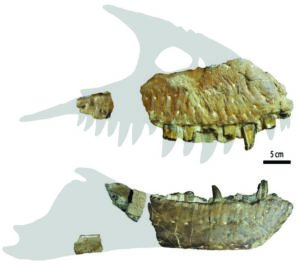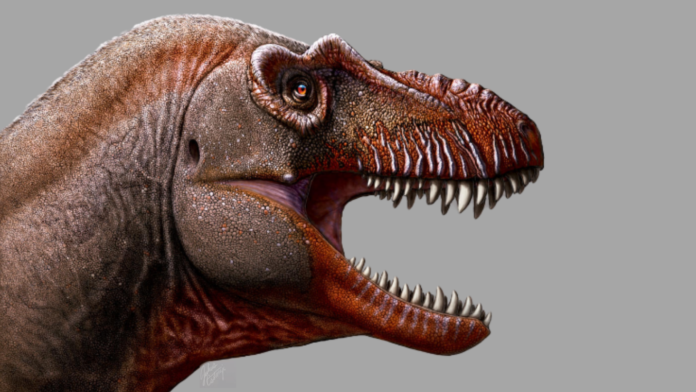An Albertan farmer and a master’s student have discovered a new species of tyrannosaur. Dubbed “reaper of death”, Thanatotheristes degrootorum is Canada’s first new tyrannosaur discovery in 50 years, and the oldest species ever found in North America.
Jared Voris is the master’s (now PhD) student who identified the new species. The University of Calgary student was researching tyrannosaurs at the Royal Tyrrell Museum when he noticed unusual bone fragments.

“We found features of the skull that had not been seen before in other tyrannosaurs,” says Voris. “The fossil has several physical features, including ridges along the upper jaw, which clearly distinguishes it as being from a new species.”
Tyrannosaurs are a group of large meat-eating dinosaurs that include the infamous Tyrannosaurus rex.
The new species is a close relative of two other tyrannosaurs, Daspletosaurus torosus and Daspletosaurus horneri. Together, these species form a new group of dinosaurs called Daspletosaurini.
Compared to other tyrannosaurs, this group has longer, deeper snouts and more teeth in the upper jaws. Study co-author Darla Zelenitsky, the University of Calgary’s principal dinosaur researcher and assistant professor in the Faculty of Science’s Department of Geoscience, explains that these differences may be adaptations to different environments, available prey and hunting strategies.
Voris estimates that Thanatotheristes degrootorum would have been approximately eight metres long and preyed on large plant-eating dinosaurs.
Its name is fitting for a ferocious predator. Thanatos refers to the Greek god of death, and theristes means one who reaps or harvests. But degrootorum is a nod to farmer and palaeontology enthusiast John De Groot and his wife Sandra. The De Groots discovered the bone fragments while hiking about 200 kilometres southeast of Calgary.
At roughly 79.5 million years old, Thanatotheristes is 2.5 million years older than its closest relative. The discovery, published in Cretaceous Research, provides a new understanding of tyrannosaur evolution and offers clues about a poorly understood time period. For the De Groots, finding a new species was beyond belief.
If you fancy having a dinosaur named after you, François Therrien, curator of dinosaur palaeoecology at the Royal Tyrrell Museum gave some advice in an interview with the Calgary Herald: “Anyone who finds a fossil should leave it where it is, note its exact location and contact the museum.”








































